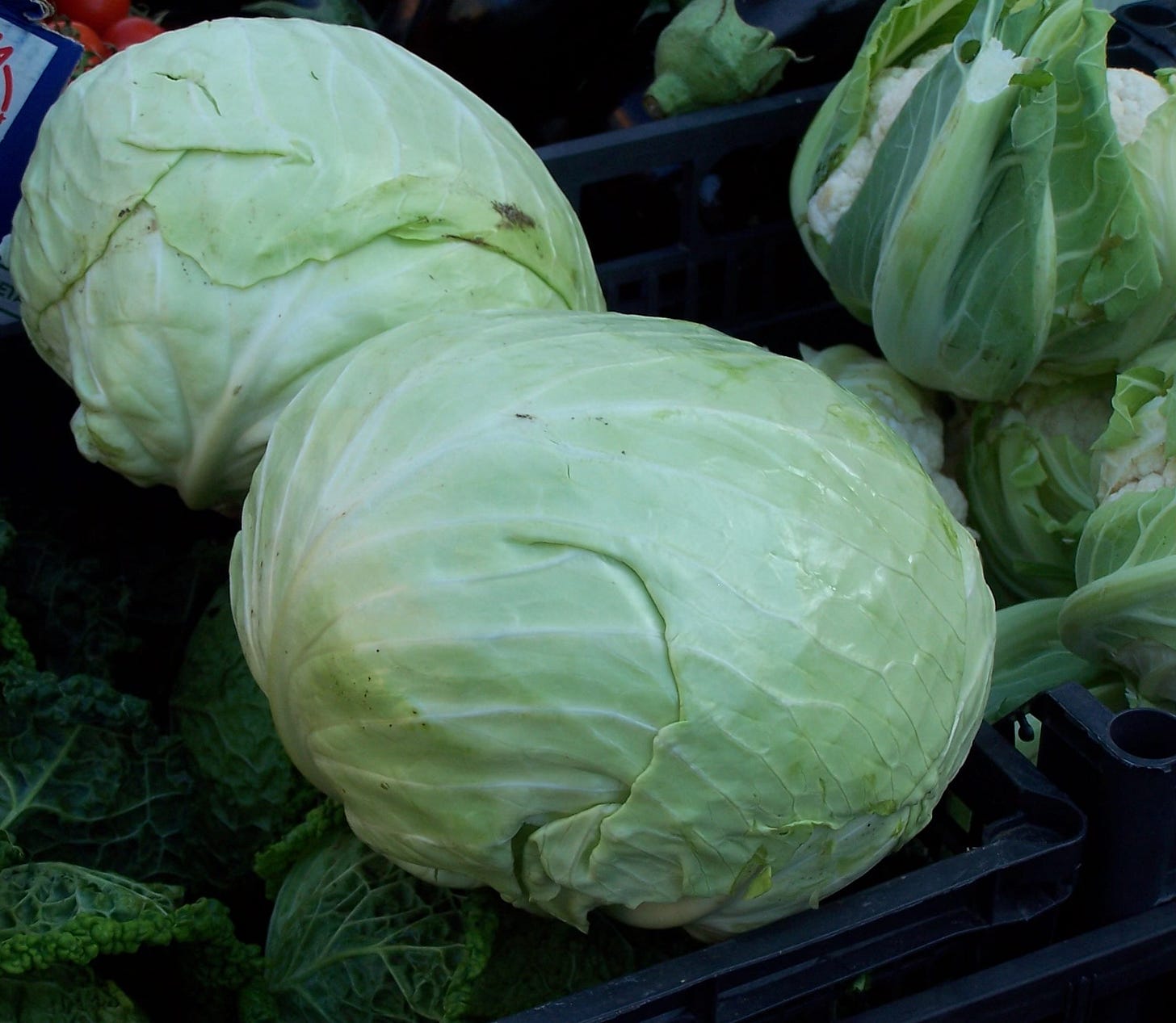A Few Rants to Greet the New Year
And a recipe for a hangover-cure that will sustain you through the winter
It’s alright, ma (I’m only bleeding)
Welcome, America, to 2025, where in New Orleans on the first day of the new year an attacker rammed a crowd of revelers with a pickup truck, killing 15 people and injuring dozens more before being killed himself. Where, shortly before the new year, a woman was burned to death on a New York City subway, while in another incident a man was shoved in front of an incoming train. (He survived, miraculously, but with grave injuries.) And I haven’t even mentioned the deliberate explosion of a panel truck in front of a Las Vegas hotel as the driver shot himself in the head. Who knows how many other acts of violence, perhaps less dramatic but nonetheless mortal for the victims, happened from sea to shining sea?
It gives strength to the NRA’s perpetual meme that guns don’t kill people, people kill people. Yes, but. . . guns are lethal and should be regulated at least to the same extent as cars, which are also lethal in the wrong hands.
I have friends in Europe who will no longer come to the United States because, they say, they are afraid of the violence. Yes, of course, there is violence in Europe too, but not on the scale that we experience here in America. Although, just as we have exported our culture of fast-food restaurants, it appears we have also exported our culture of savagery.
Right before the new year I went to a multiplex to see the new Bob Dylan movie (which, by the way, I found totally enjoyable—the music!—quite moving and surprisingly nostalgic). Seated in the theater, we were a captive audience before the feature for at least six, possibly as many as eight, previews of coming attractions. It was hard to keep count as one blended directly into another. But what was astonishing to me was the utter, unadulterated violence and naked aggression that seemed to be the theme of each upcoming film—from bashing cars and trucks and tanks, to beating people up, to fiery explosions of buildings, homes, whole villages, to screaming confrontations and killing fields, it was breathtaking. And disturbing. No wonder, I said to my friends, the U.S. is a violent place. This is the message we are being given, over and over again.
Dylan had it right:
Advertising signs they con You into thinking you’re the one That can do what’s never been done That can win what’s never been won. . . .
It’s alright, Ma, I’m only sighing
The Yipper in Chief
I spent last weekend with a charming but quite yippy little dog. He yipped to go out, he yipped to come in, he yipped for his supper, he yipped when he wanted to play, he yipped just for company. He reminded me of our incoming President, yip, yip, yip, one day it’s illegal (or not) immigrants, the next day it’s tariffs, the third day he’s yipping at the heels of the outgoing administration, hoping (I believe) that if he yips loudly enough they will all pack up and leave early.
In your dreams, Mr. Trump!
The yip that bothers me the most is the one about tariffs because it will directly affect your food and mine. (Immigration restriction will have an impact on our food supply too, but it’s a different and more complex subject.)
Did you think inflation was bad under Biden? And you voted for Trump because he would get it under control? Think again! Because the price of everything is about to go up as soon as the new chief of state imposes tariffs on Mexican, Canadian, and Chinese goods. If you’re an American and you love your food, you are in for a big unhappy surprise.
Members of the prospective administration have offered varying opinions on the subject, but most recently in the Washington Post it was reported that “his stated intent [is] to impose 25 percent tariffs on Mexico and Canada and an additional 10 percent tariff on China unless they take measures to reduce migration and drug trafficking.”
And, folks, that doesn’t mean just maple syrup, avocados, and soy sauce.
Here are the foods we import from Canada, along with maple syrup:
Fresh fish, crabs, lobster, canola oil, potatoes, beef, pork, wheat, oats, corn, and barley. In considerable quantities.
And here’s what we import from Mexico, along with avocados:
Tomatoes, peppers (sweet and hot), strawberries, other berries, cucumbers, cauliflower, broccoli, other brassicas, lemons, limes, mangoes, asparagus, lettuce, spinach, walnuts, and sugar.
And we’re not talking about small amounts of elite items. At various times in the year, depending on the season, most of the cauliflower, most of the sweet and hot peppers, and almost all of the canola oil consumed in the U.S. is imported, either from Mexico or from Canada. Mexico’s export of tomatoes to the U.S. alone amounts to almost a third of the total international tomato trade in any given year.
But let’s talk about fish, since that’s a favorite in my kitchen and on my table: I’ve emphasized many times, but surely not often enough, the enormous quantity of our seafood that is imported—70 to 85% of it, according to a site called Visualcapitalist.com (see link below), where we learn that the largest amount of that imported seafood is from Canada and worth a total of $3.1 billion annually. Add a 25% tariff to that and you’ll bring it up to $3.875 billion or a rounded cool $4 billion. A haddock filet, fresh from Canada, that costs $14 a pound right now will be $17.50 in February. That is, if anyone can afford it.
And what about those Mexican tomatoes: We brought in $2.5 billion worth in 2020, the last year for which I could find accurate figures. Expect that to become $3.125 billion next year with the new tariffs. Just tomatoes. Not to mention all the other fresh fruits and vegetables that grace your home table, perk up your deli sandwich or soup, garnish your restaurant meal, whether prime rib or humble burger, or round out your child’s school lunch tray.
Here's the link to find out more: https://www.visualcapitalist.com/cp/us-food-imports-by-country/
If I say I’m alarmed, that’s putting it mildly. Yes, we can and should be supporting local agriculture, local farms, local fisheries. I am one of the fortunate few, call us elite if you will: I count three farmers’ markets, at least four farm stands, and a great fish market within easy reach (by car) from my kitchen, plus a couple of food shops with a good supply of locally grown provender. And I’m willing and able to afford the extra cost of locally harvested food. But for millions of Americans that is simply not part of the picture and cannot be because of the industrial nature of food production and distribution throughout the country. And because of poverty, both of income and of opportunity. The price increases that will result from these tariffs will mean an increase in industrially produced and mostly unhealthy food for those millions. Moreover, gearing up any food resource anywhere in the country to supply a much larger national market takes time. Tomatoes don’t grow overnight, even with modern big-ag techniques, and without Mexico’s input, growing enough tomatoes to supply all those pizzas is just not in the cards.
I remember what Alice Waters said a long time ago: “Good food is a right, not a privilege.” Keep that in mind next time you go shopping.
A soup for all seasons, but especially for winter: la jota
After all that ranting, you’re probably wondering if I’ll ever get around to talking about recipes. Just hang in there a bit, because here is a splendid soup from the far north of Italy that came to me from Lidia Bastianich before she was. . . well, Lidia Bastianich. That was years ago when Lidia and her former husband Felice had a restaurant in Manhattan that combined their two names as Felidia. (The claim is sometimes made that the restaurant, which opened in 1981 and has since closed, “introduced New Yorkers to regional Italian cuisines,” but that is simply not true. In November 1980 the Times’ “Dining Out Guide” already listed 15 notable northern Italian restaurants in Manhattan alone.)
In the mid-1980’s, when I was writing about food at the New York Times, my late-December assignment was to come up with hangover cures for New Year’s Day. Lidia provided me with this soup that bears all the hallmarks of her native region, Istria, historically part of Italy (lots of Italian spoken there) but politically these days firmly in Croatia. Those hallmarks, sauerkraut, beans, smoked pork, speak to the strong influences from the Austro-Hungarian Empire that ruled over the peninsula for centuries.
With its tart and peppery flavors (don’t stint on the black pepper) la jota is indeed a great hangover cure, but it’s also a terrific soup to serve throughout these cold, stormy, snowy, bleak midwinter days, almost guaranteed to cheer you up, especially if served with a bountiful Schiopettino from the Colli Orientali di Friuli.
Keep reading with a 7-day free trial
Subscribe to On the Kitchen Porch to keep reading this post and get 7 days of free access to the full post archives.







